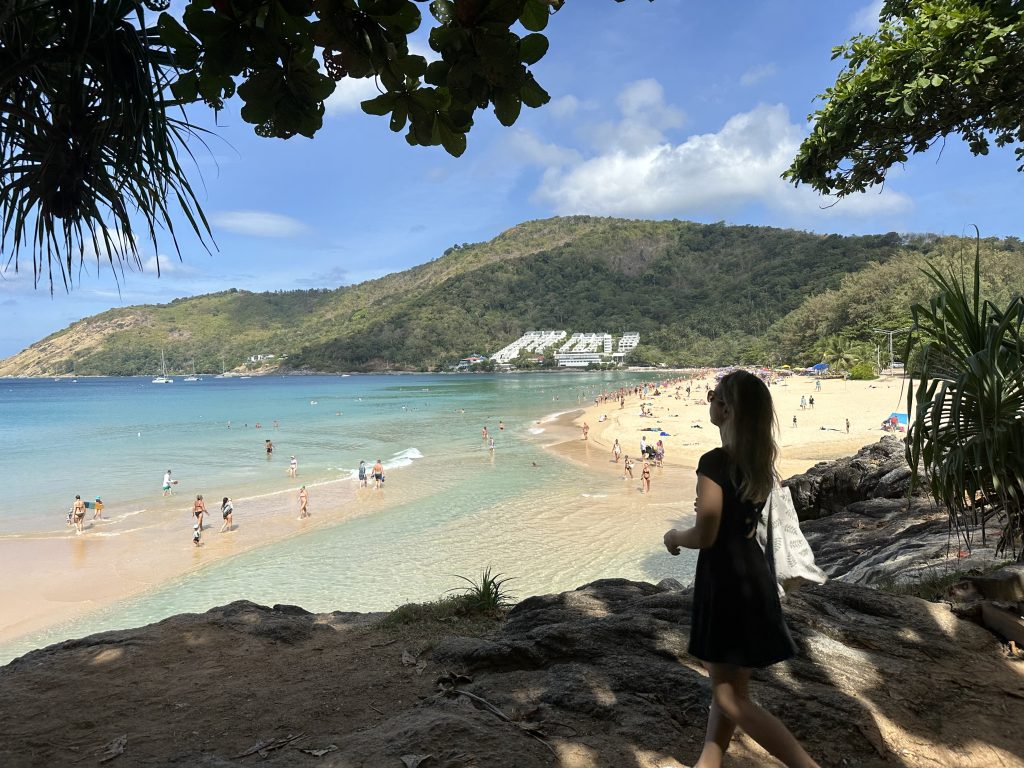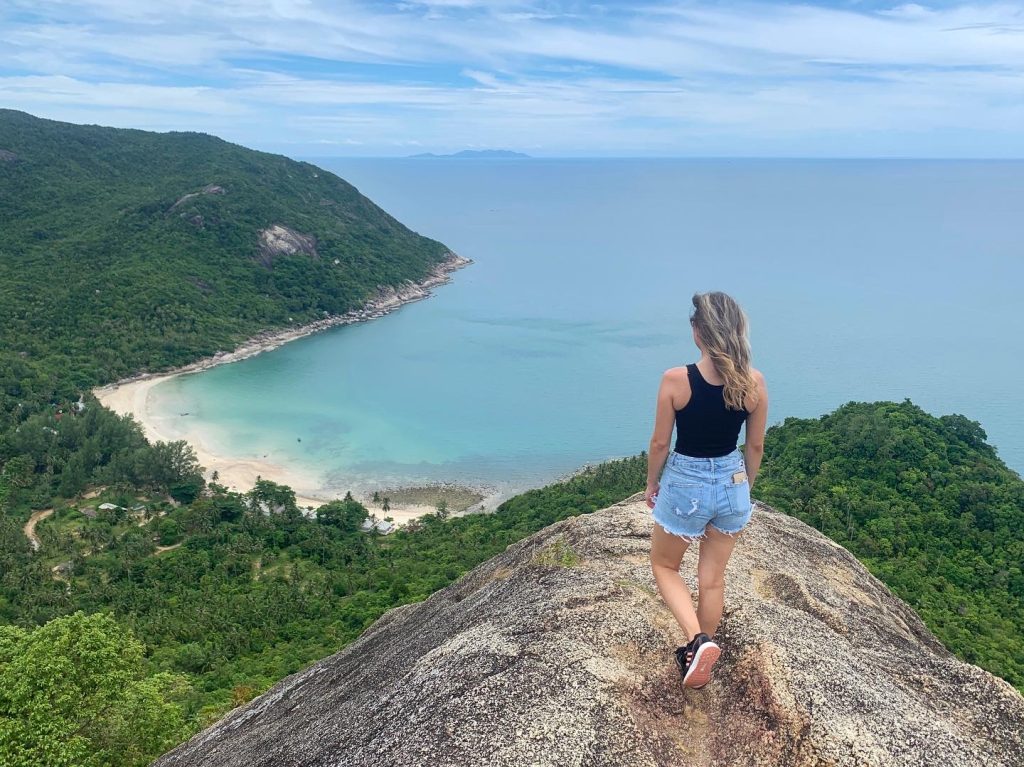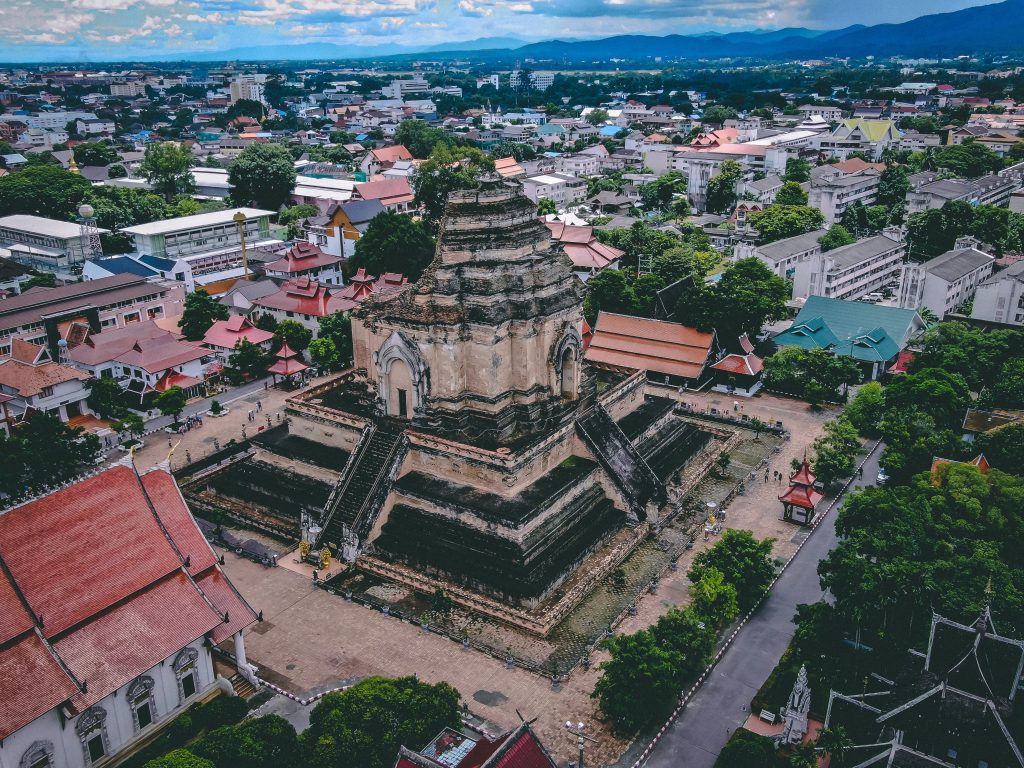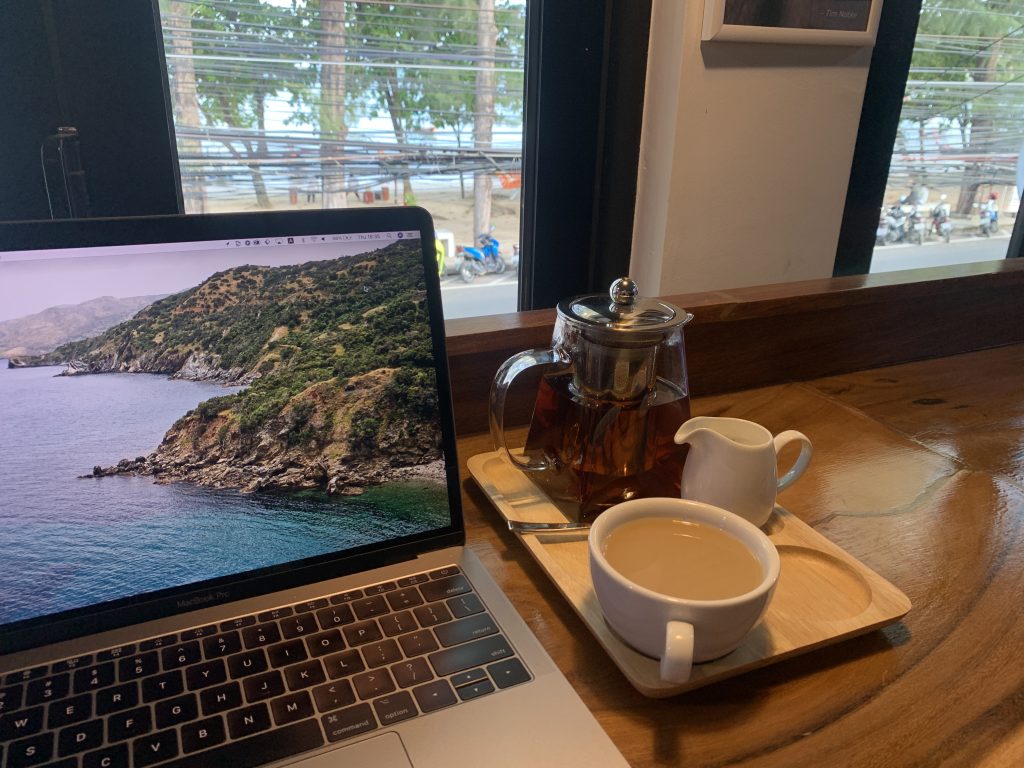I’ve spent a total of 6 months in Thailand. In this post, I’ll share my experience and everything I wish I had known before I left for Thailand.
I first visited Thailand in 2022 and stayed for three months. Impressed by everything it has to offer, I returned the following year. At the moment I’m planning my third visit to Thailand.
Why Thailand?
So, you’ve decided to embark on the digital nomad adventure. The first question that comes up is “Where should I go?”
IMO, Thailand is an excellent choice, even if this is your first time heading to Asia or living abroad. Here are my pros and cons.
Pros of Thailand
Given it’s a popular tourist destination, Thailand has a lot to offer. Tropical landscapes, historical landmarks and fascinating temples, fantastic food, vibrant nightlife, and countless fun activities.
But if you’re staying in Thailand for more than a month, it’s not just about the fun stuff. It’s also about practicality. So I’ll focus on the pros for longer stays.

1. Cost of living
Digital nomads from around the world pick Southeast Asia (Thailand, Bali, Vietnam, etc.) as their base. The cost is one of the main reasons behind this.
Although Thailand is not as cheap as it used to be, it’s still super affordable if you’re visiting from Europe or America. Even with 500 bucks, you can get a small but modern studio for two people, often including amenities like a swimming pool and a gym. Of course, this varies based on the location and season.
Transport (scooter rentals, fuel and taxis) and local food are way cheaper than in Europe. Groceries are also inexpensive. But don’t expect dirt-cheap prices when going out or dining at nice international restaurants.
2. Climate
It’s always warm in Thailand. The high season (best weather conditions) in Thailand starts in December and ends by April. If you’d like to escape winter in Europe and North America, it’s the place to be.
3. Convenience and infrastructure
Popular places in Thailand are well-developed. The Internet is excellent. SIM cards with unlimited data are incredibly affordable. You’ll easily find co-working spaces and cafes where you can work. There’s an abundance of food delivery apps, taxi apps, local and western restaurants. There are countless fun activities.
If you have travel insurance, hospitals and doctors are excellent. Unfortunately, I had to visit the hospital several times and I was pleasantly surprised each time.
4. Safety
I’ve found Thailand to be very safe. I feel more comfortable in Thailand than I do in most European or American cities. If you check out reviews on Nomad List, you’ll see that most nomads agree it’s a pretty safe country.
In Phuket and Koh Phangan, I felt incredibly safe. In Bangkok, I felt fine, but you still need to be cautious as it’s a big city. Like in any big city, there are scammers looking to take advantage of tourists, and I’m guessing pickpockets, too (although I haven’t encountered any). You can check out common tourist scams here.
5. Community and social life
Since Thailand is one of the most popular destinations for nomads, you’ll have plenty of opportunities to meet new people. The best places to do so are co-working spaces or meetups organized by digital nomad communities such as Nomad List or ones found in Slack channels, and Facebook groups.
Cons
I can only really think of one drawback, and that is the traffic.
If you can’t stand tropical weather, then the heat and the humidity are also cons. For me, warm weather year-round is an advantage.
1. Traffic and transport
Although it might be better than other Southeast Asian countries, traffic in Thailand is still chaotic and often unsafe.
Scooters are the main mode of transportation. In some places, a scooter is your only way to get around. Always wear a helmet (even though you’ll see many people who don’t)!
Visa + getting to Thailand
You’ll most likely need a visa to enter Thailand. Luckily, tourists from most countries can get a visa on arrival. If not, you can apply online which is what I do. You’ll get a tourist visa for 30 or 60 days.
If you’d like to stay longer, apply for a 30-day extension at the immigration office in Thailand. It’s easy and not expensive. For an even longer stay, you can explore non-tourist visas such as the education visa.
Thailand has a few major airports so getting there shouldn’t be an issue. I flew directly to Phuket, but you can also fly to Bangkok, Koh Samui, Chiang Mai or other airports.
The first time I flew with Emirates with a layover in Dubai. Next time I chose Qatar Airways with a layover in Qatar. It’s a long journey, but I had a great experience with both Qatar and Emirates. Qatar is the winner but I’d go with whichever one’s cheaper.
Which destination should you go to?
The good thing about Thailand is that it has many beautiful yet totally different areas. Bangkok is fun, chaotic and huge. The north has culture and nature. The south is where the beaches and the palm trees are.
I’ll go over four places, but there are many more options.
Phuket

Phuket is an island in the Andaman Sea and a popular tourist destination. If you want to live by the sea but still enjoy the convenience of city life (taxi apps, food delivery, various events), Phuket is for you.
Pros: nice beaches, good infrastructure, plenty of interesting activities, diverse cafes/restaurants, a good starting point for visiting Phi Phi islands and Krabi.
Cons: high prices, many tourists, parts of the island are known for nightlife and sex tourism (if you want to avoid that, don’t go to Patong).
Bangkok

“Chaos” is how I would describe the capital of Thailand. With a population of 11 million, Bangkok has it all: vibrant nightlife, chaotic traffic, historical landmarks and temples, fantastic food, and modern shopping malls.
Pros: cost of living, good but affordable accommodation, countless activities and events.
Cons: traffic, pollution, and the heat.
Koh Phangan

A laidback island with fantastic nature. It’s less developed than Phuket. The southern part of the island is famous for Full Moon parties held once a month. The north is calm and peaceful. The west side is home to many yoga schools and spiritual classes.
Koh Phangan is located in the Gulf of Thailand. You can visit it even in June, July and August because the rainy season starts later in the Gulf.
Pros: nature, true island life, fewer crowds (except for the Full Moon parties in the south), proximity to Ko Samui and Ko Tao islands.
Cons: it’s less developed – there is no airport and there are only three roads on the island (making it almost impossible to get around without a scooter or rental car).
Chiang Mai

A city in the mountains of northern Thailand. It’s known for its ancient temples. This is the only place on this list that I haven’t visited yet, but I’m including it since it might be the most popular place in Thailand among digital nomads.
Pros: cost, a large community of digital nomads and expats.
Cons: the smoky season when air pollution is high (from February to April).
Planning your stay
Once you’ve decided where you’ll go, it’s time to plan where to stay, how to get around, where to work and where to meet people in Thailand.
When should you travel to Thailand?
Thailand has warm weather throughout the year, but there’s the wet and dry season. The fresh season (November – February) is the best time to visit. The hot season starts in March and lasts until the end of May. The wet season lasts from May to October, and it’s not recommended to visit Thailand during that time.
Although the seasons vary depending on your location in Thailand, the best time to visit is from December until mid-April.
January and February are the most expensive months. By March, prices start to drop, and the weather is still excellent. At the end of April, the weather starts changing and there can be more rain. The islands in the Gulf of Thailand are an exception to this rule – the rainy season doesn’t start until September.
Accommodation
You’ll typically choose between staying in an apartment, a villa or a c0-living.
An apartment is the most common choice as it’s more affordable than a villa and provides more comfort and privacy than co-living. Co-living typically includes a private room with a bathroom, access to shared spaces (often including a pool), and a membership fee for a co-working space. A villa is the least budget-friendly option, but if you have a larger budget and more people, you can find fantastic villas with private pools. Co-living is great if you’re traveling alone, an apartment is best for couples, and a villa is a good pick for a bigger group.
You can also opt for a hotel or hostel, but they’re not that convenient for long stays.
Getting around
Scooters are the primary mode of transportation for locals and many tourists. You can rent scooters pretty much anywhere. Monthly rental prices start at around 3,000 baht (around 100 euros). Fuel is extremely affordable.
In Bangkok, you can rely on taxi apps and a well-developed public transportation system since driving a scooter there is not recommended unless you’re an experienced driver. Taxi apps like InDrive, Bolt, and Grab all work well and Grab is the most expensive one.
If you go to Phuket you can use taxi apps but scooters are cheaper and more convenient. On other islands like Koh Phangan, you’ll need to rent a scooter (or car) if you want to get around the island. There are no taxi apps there, and local “taxis” are not available everywhere and can be expensive.
Working

You’ve probably seen photos of digital nomads working from the beach. But from my experience, scorching sun and sand are far from ideal working conditions. If you’re like me, you’ll prefer a dedicated workspace.
You might have a suitable work setup at your accommodation. Or if you prefer working from cafes, Thailand has many great ones with fast internet. It’s common to see people on their laptops in coffee shops all over Thailand.
My personal favorite is working from a co-working space, and there are plenty in Thailand. Prices start at around 3,500 baht (approximately 100 euros) per month.
Meeting people

If you’d like to socialize and make friends in Thailand, here’s where I’d recommend meeting likeminded people:
- Co-working spaces: Many co-working spaces organize events, workshops, and networking sessions, making it easier to meet new people.
- Digital nomad communities: Join online communities like Nomad List, Facebook groups, or Slack channels for specific locations. These communities often organize meetups, and events to connect with other travelers.
Frequently Asked Questions
What are the prices like?
- Food: 50-150 baht (2-3 euros) at street stalls, and in restaurants, it starts from 200 baht.
- Scooter rental: starting from 3,000-3,500 baht (~100 euros) per month, depending on the location and season.
- Co-working space: around 3,500-5,000 baht (~100 euros or more).
- Accommodation: It depends on the type of accommodation, location, and season. From my experience, there are countless options, and there is accommodation for every budget.
*All prices vary depending on the location and season.
Is Thailand a good option for solo travelers?
Thailand is considered a safe destination. I’ve met many solo travelers in Thailand, both men and women. If you make an effort, you can easily meet other travelers. The main downside of solo travel is that some costs can be higher (e.g., accommodation).
Tips
- Do your research online to figure out what part of Thailand suits you best. Once you pick a destination, find out what’s best neighborhood to stay in, if there are any recommended co-working spaces in the area, how easy it is to get around, etc.
- Check out online communities, forums, and groups before you arrive.
- Make an effort to meet new people because it will make your stay ten times more enjoyable. Many nomads you’ll meet are also looking for friends to hang out with.
- Don’t pack too much stuff. Clothes and souvenirs are affordable in Thailand, so leave some space in your suitcase.
- The currency is the Thai baht (1 euro = 39 baht). Many places accept cards, but you’ll also need cash, which you can withdraw from ATMs or exchange at currency exchange offices (from euros or dollars to baht).
- Always wear a helmet when riding a scooter.
- Visit a night market and try Thai street food. I recommend pad thai and coconut pancakes. Treat yourself to a massage at least once.
I hope you’ve found answers to all your questions about visiting Thailand as a digital nomad. It quickly became one of my favorite countries and I can’t wait to head back

